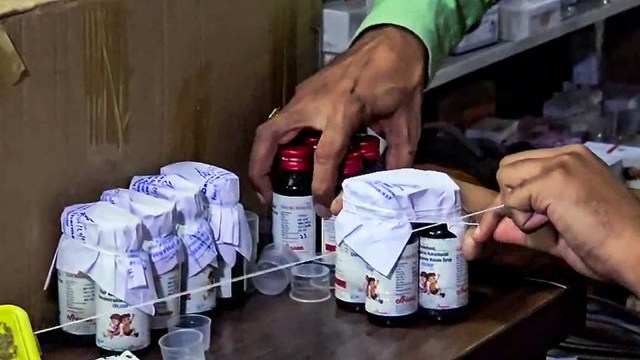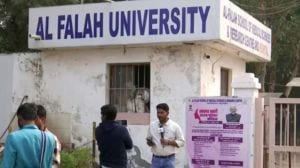Between 2016-17 and 2020-21, the drug regulator in Tamil Nadu consistently fell short of its targets, with inspectors conducting about 61% of scheduled drug inspections and collecting roughly 49% of the samples required for quality testing.
These persistent shortfalls — which lay bare structural weaknesses in monitoring and enforcement, and are in focus following the death of 22 children after drinking contaminated cough syrup in Madhya Pradesh’s Chhindwara district — were red-flagged by the Comptroller and Auditor General of India last year.

In the wake of the Madhya Pradesh deaths, the doctor in Chhindwara who prescribed the cough syrup and three local drug inspectors have been suspended.
Story continues below this ad
The Centre has also directed “risk-based inspections” to be carried out in 19 manufacturing units across six states to identify gaps and strengthen quality assurance mechanisms.
Sresan Pharmaceuticals, the manufacturer of the Coldrif cough syrup linked to the deaths, has been issued a show-cause notice accusing it of grave violations, but only after the Madhya Pradesh drug regulator wrote to its Tamil Nadu counterpart requesting action.
Had Tamil Nadu regulators conducted regular inspections and acted on the CAG report, this tragic incident could have been averted, officials say.
On August 1, 2024, the CAG sent a performance audit report to the Tamil Nadu government. The report, which examined the state’s public health infrastructure, was tabled in the state Assembly on December 10, 2024 and covered the performance audit for the period 2016-2022. It red-flagged a series of deficiencies, including weaknesses in the drug regulatory ecosystem, and presented scathing data on the state’s drug inspections.
Story continues below this ad
According to the CAG data, between 2016-17 and 2020-21, drug inspectors consistently fell short of targets: in 2016-17, only 66,331 of the 1,00,800 inspections targeted were conducted, a shortfall of 34%; in 2017-18, 60,495 inspections were conducted against a target of 1,00,800, leaving a 40% gap; in 2018-19, 59,682 inspections were conducted from 98,280 targeted, a 39% shortfall; in 2019-20, 62,275 inspections were conducted out of 1,03,500 targeted, leaving a 40% gap;
and in 2020-21, 62,358 inspections were conducted against a target of 1,00,800, resulting in a 38% shortfall.
In the same period, drug inspectors also fell short of targets for collecting samples for testing.
In 2016-17, only 9,561 of the 17,280 samples that were to be lifted were collected, a shortfall of 45%; in 2017-18, 8,908 samples were lifted against a target of 17,280, leaving a 48% gap; in 2018-19, 8,988 samples were collected from 19,656 targeted, a 54% shortfall; in 2019-20, 9,011 samples were lifted out of 19,320 targeted, leaving a 53% gap; and in 2020-21, 8,604 samples were collected against a target of 18,816, resulting in a 54% shortfall.
Story continues below this ad
The report also flagged the manpower shortage being faced by the drug control department, which likely exacerbated the issue: against the sanctioned strength of 488, the working strength was 344 — a 32% vacancy.
According to officials, these numbers point to public health implications, not just for
Tamil Nadu but nationally, since drugs are distributed across multiple states.









